The travel photographer who witnessed Barcelona spring back to life
- Text by Adrian Morris
- Photography by Adrian Morris
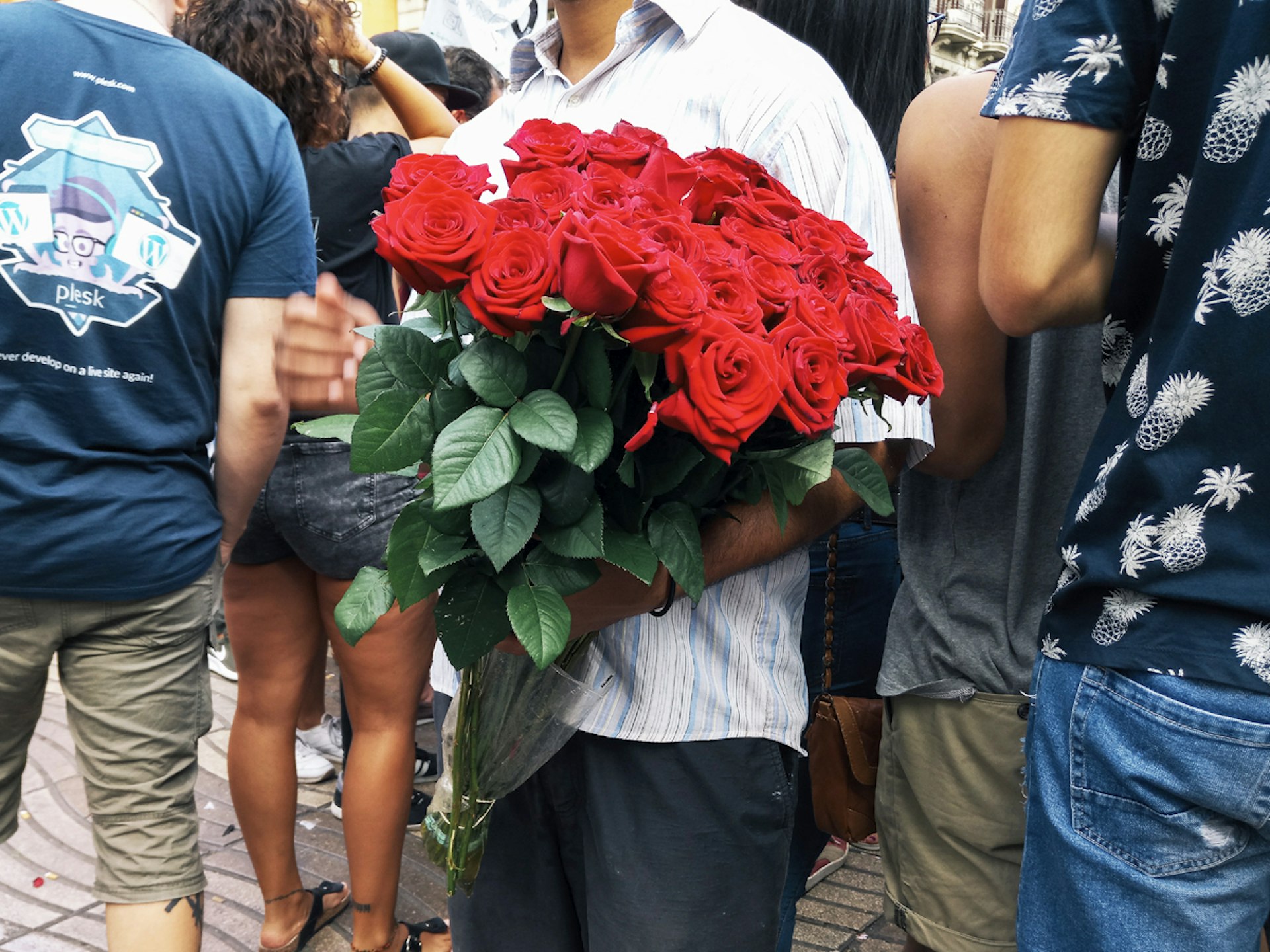
On August 16, Barcelona was alive with the sound of the Fiesta Major de Gracia – one of many street festivals that take place in the summer months in cities across Spain.
As a photographer and outsider, who now calls Barcelona home, it was an event I’ve always wanted to capture. The streets are full of energy: it’s the biggest party of the year. But the following day, everything changed when the city and its people were attacked.
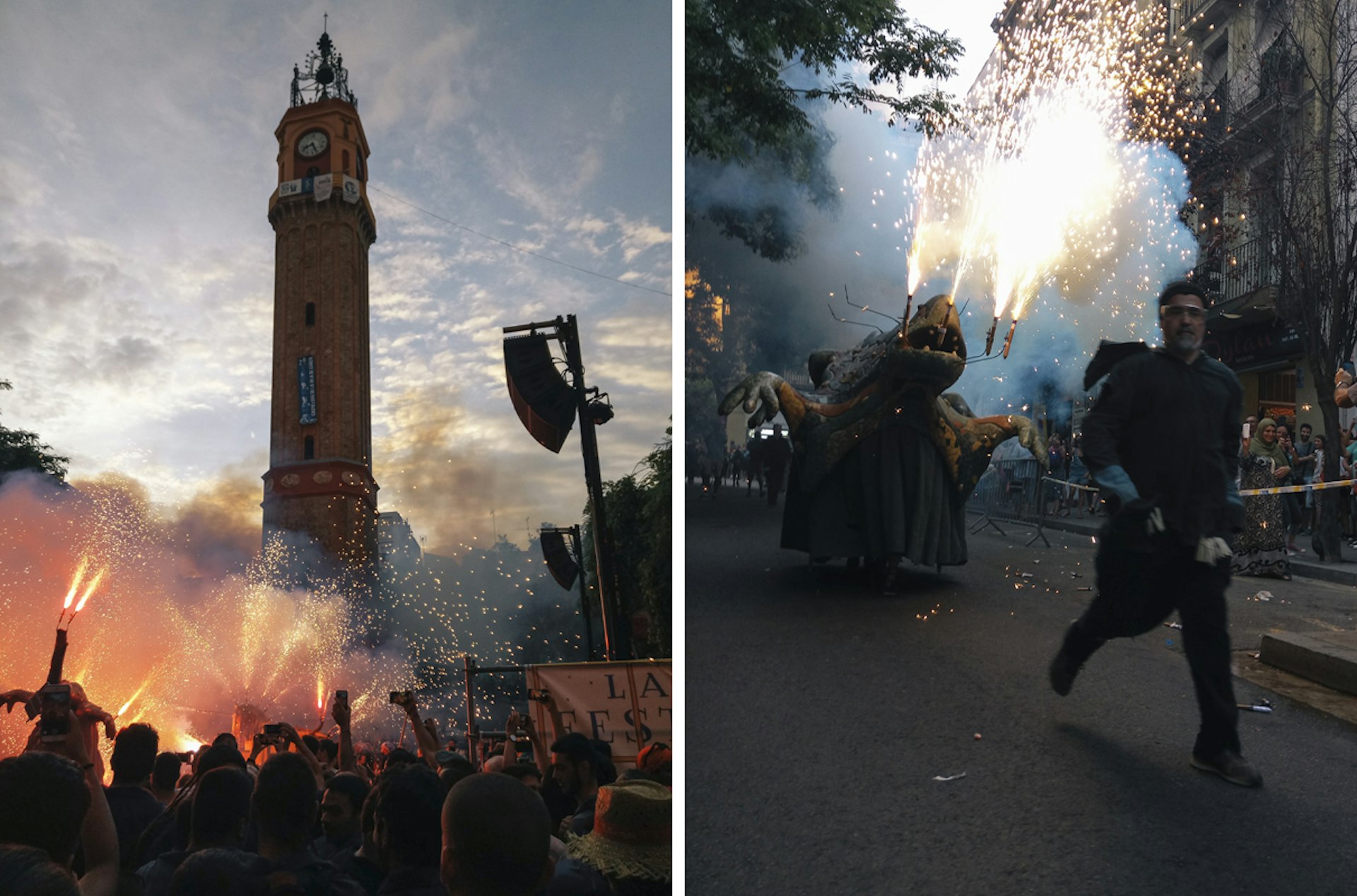
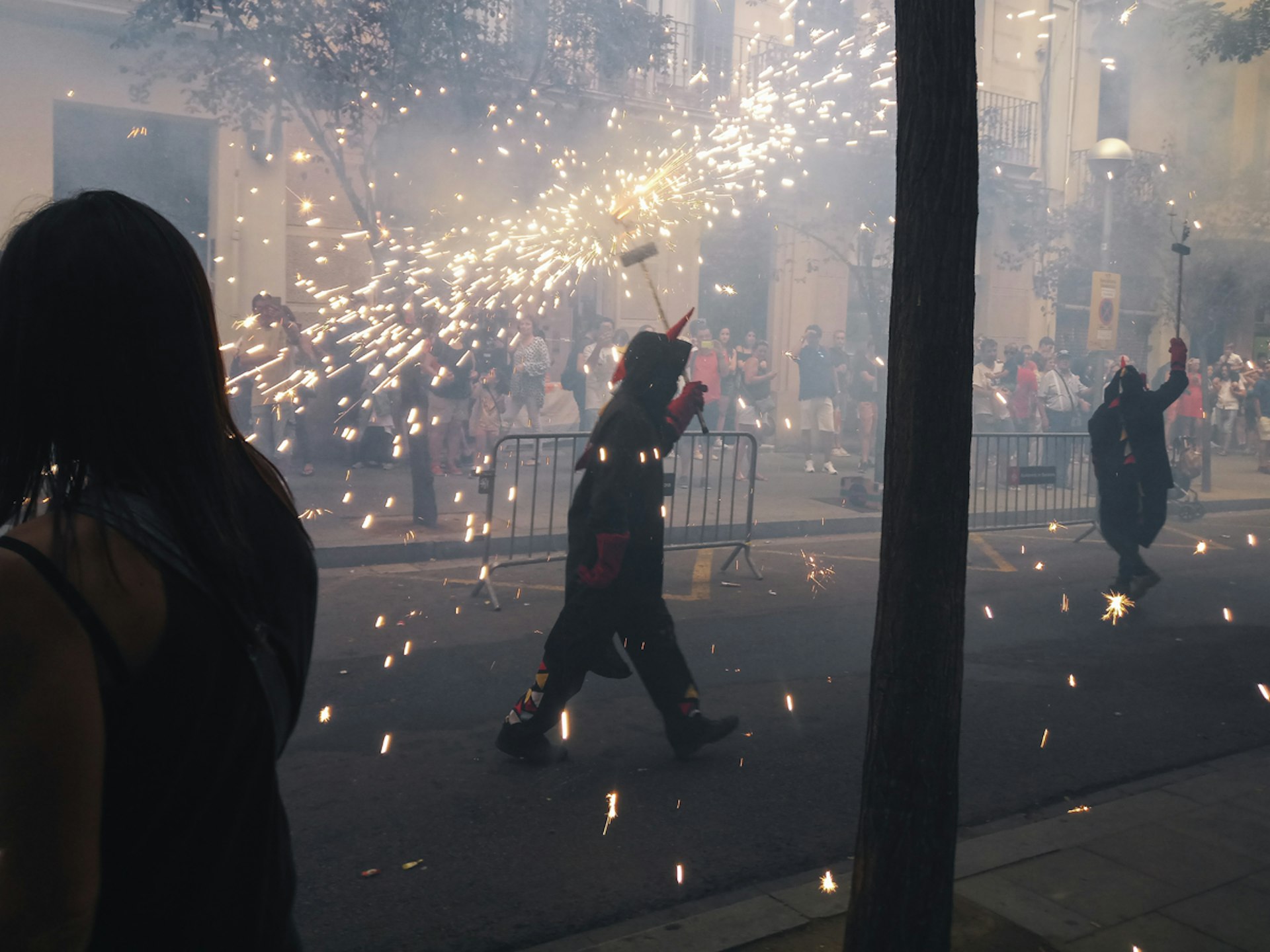
I was on the beach when news started to spread. A van had driven into pedestrians, or so claimed messages over Whatsapp, but no one knew what was going on or how many people had been hurt. My girlfriend was texting manically and people were fleeing all around me after rumours started to spread that something was going to happen on the beach.
It was only later that we learned the extent of what had happened. Fifteen people lost their lives that day, and at least 130 were injured. Nine hours after the first attack, another van drove into pedestrians in Cambrils killing one woman and leaving six injured. The city was in shock.
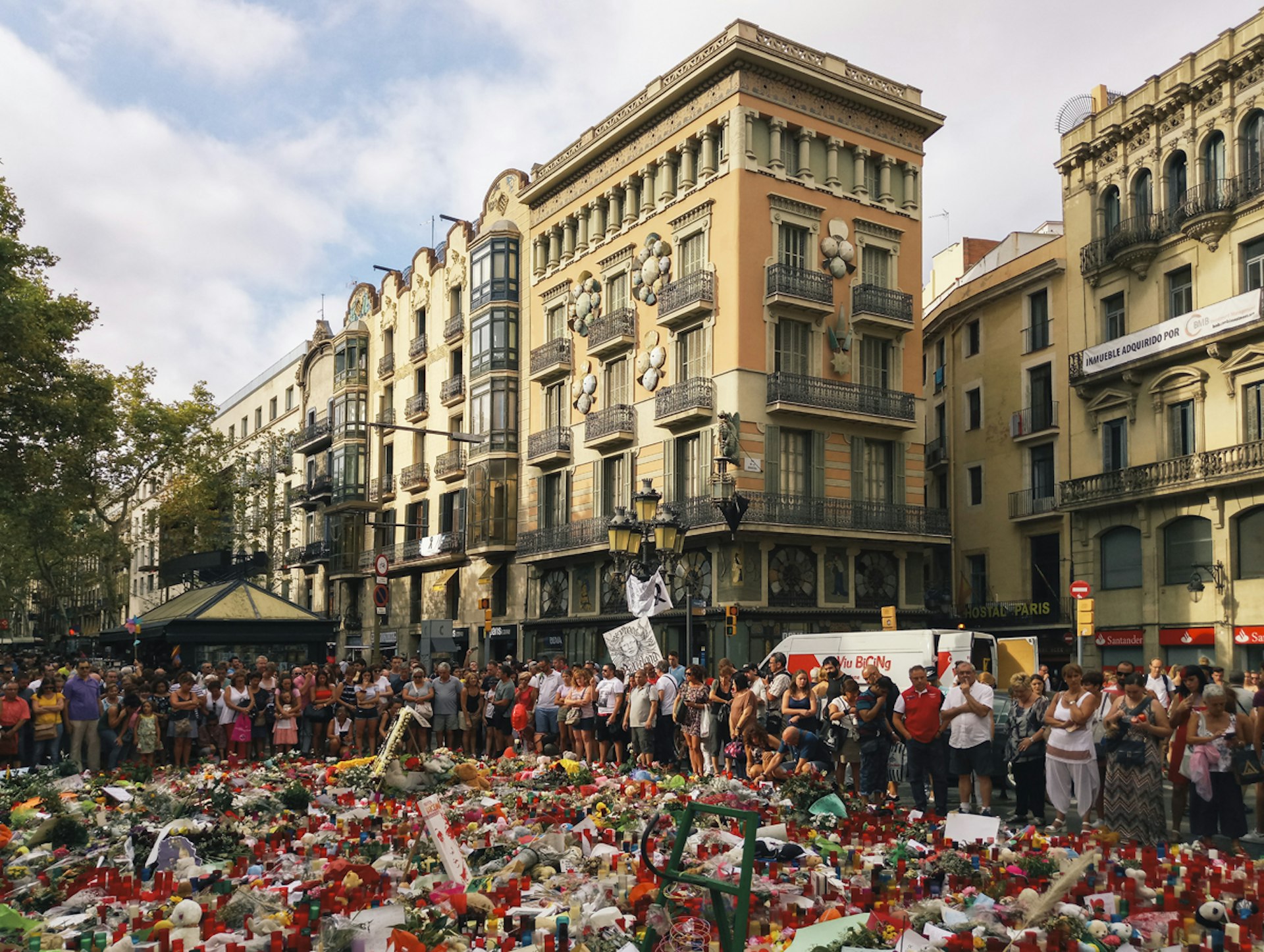
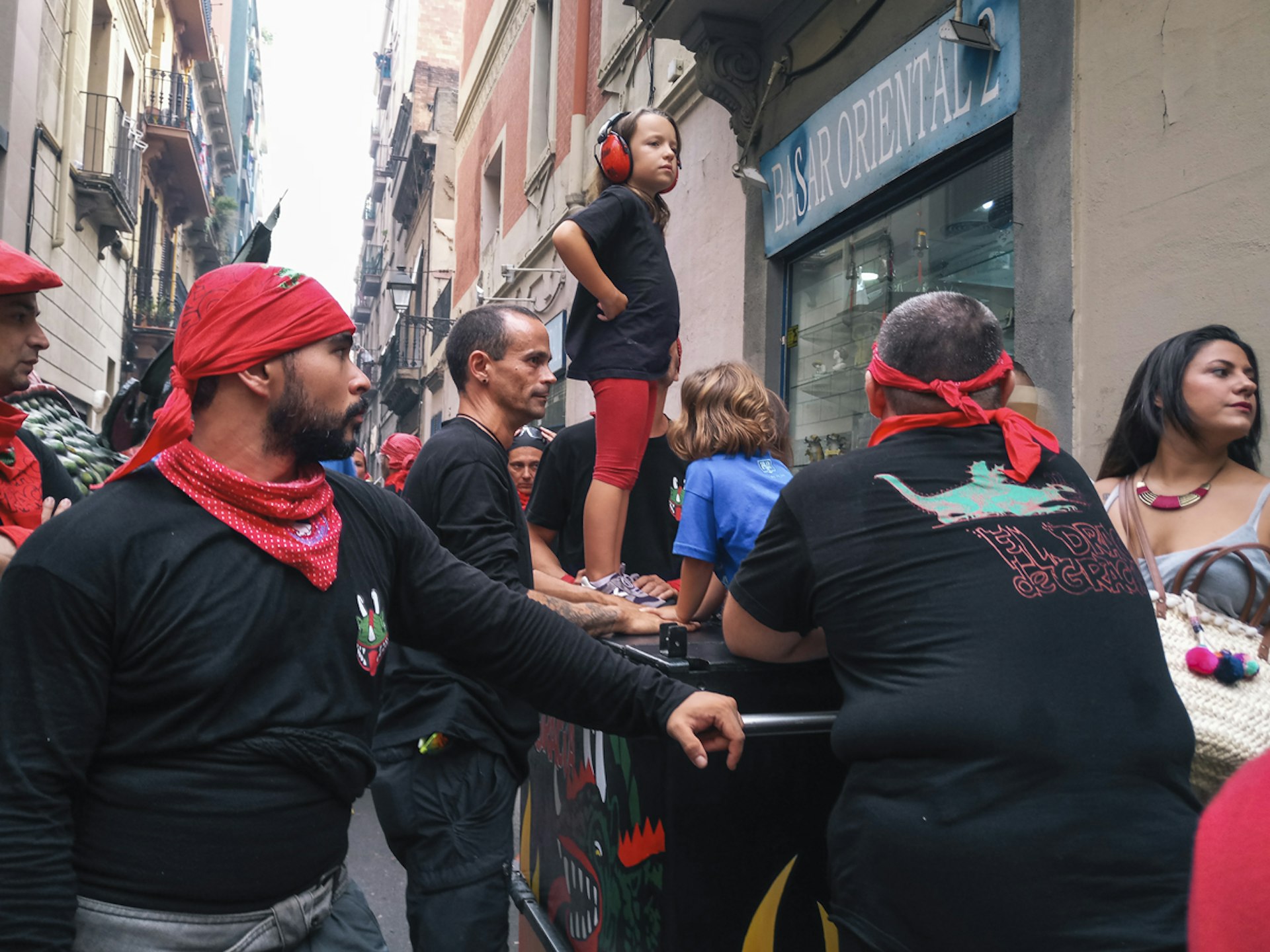
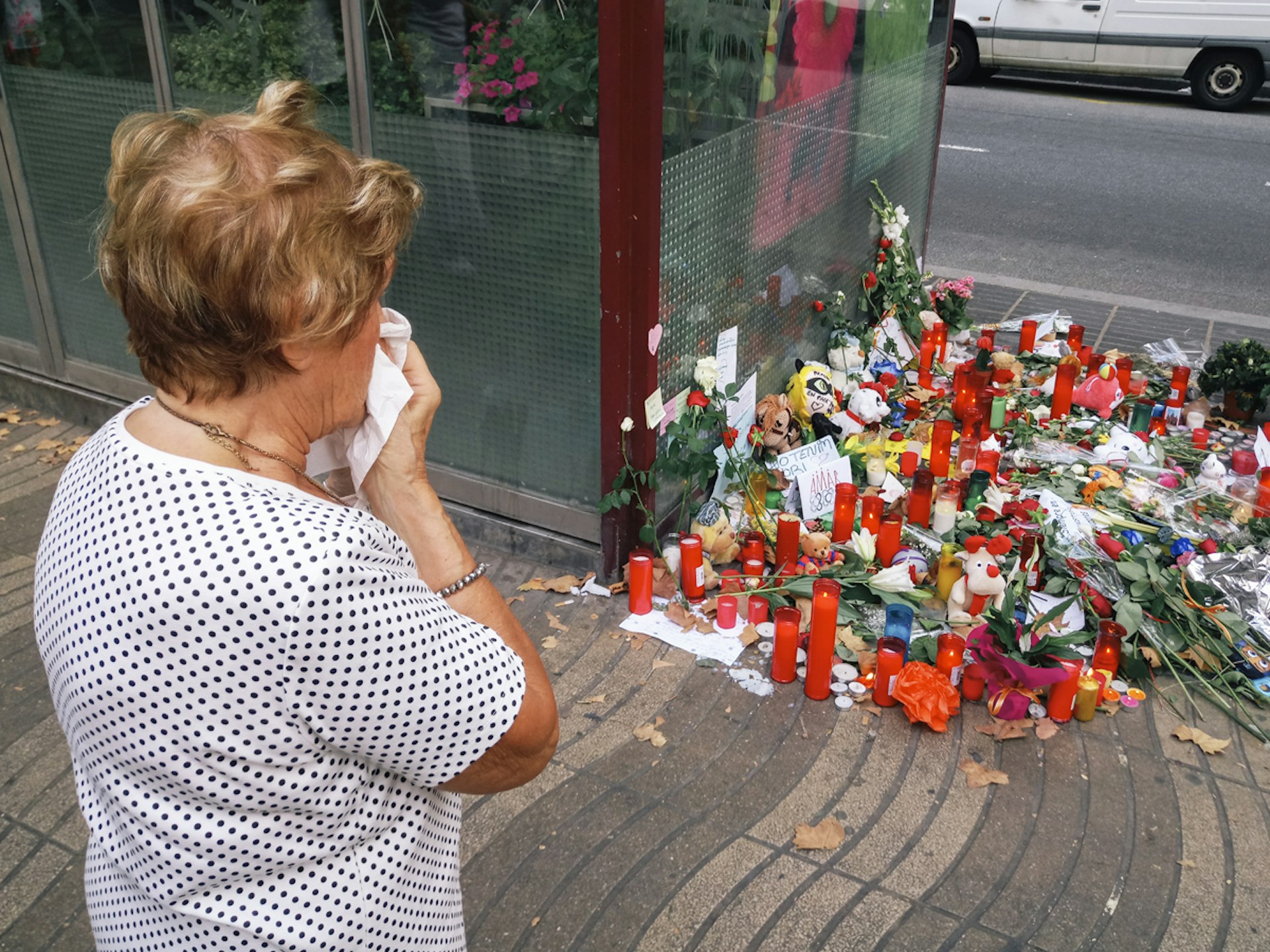

But the next morning there was a sense of calm. On La Ramblas, where the attack took place, the sidewalks were covered in flowers and candles. People were writing messages on trees and standing together in quiet contemplation.
Down the road, members of the Muslim community were staging a demonstration and holding signs that read, ‘I’m a Muslim but not a terrorist.’ Spanish people mixed with tourists; Catalonian colours flew side by side with the Spanish flag.
For that day at least, everyone was united. That’s what surprised me the most: watching people put aside their differences and come together in such a large scale was a pretty powerful thing to see.
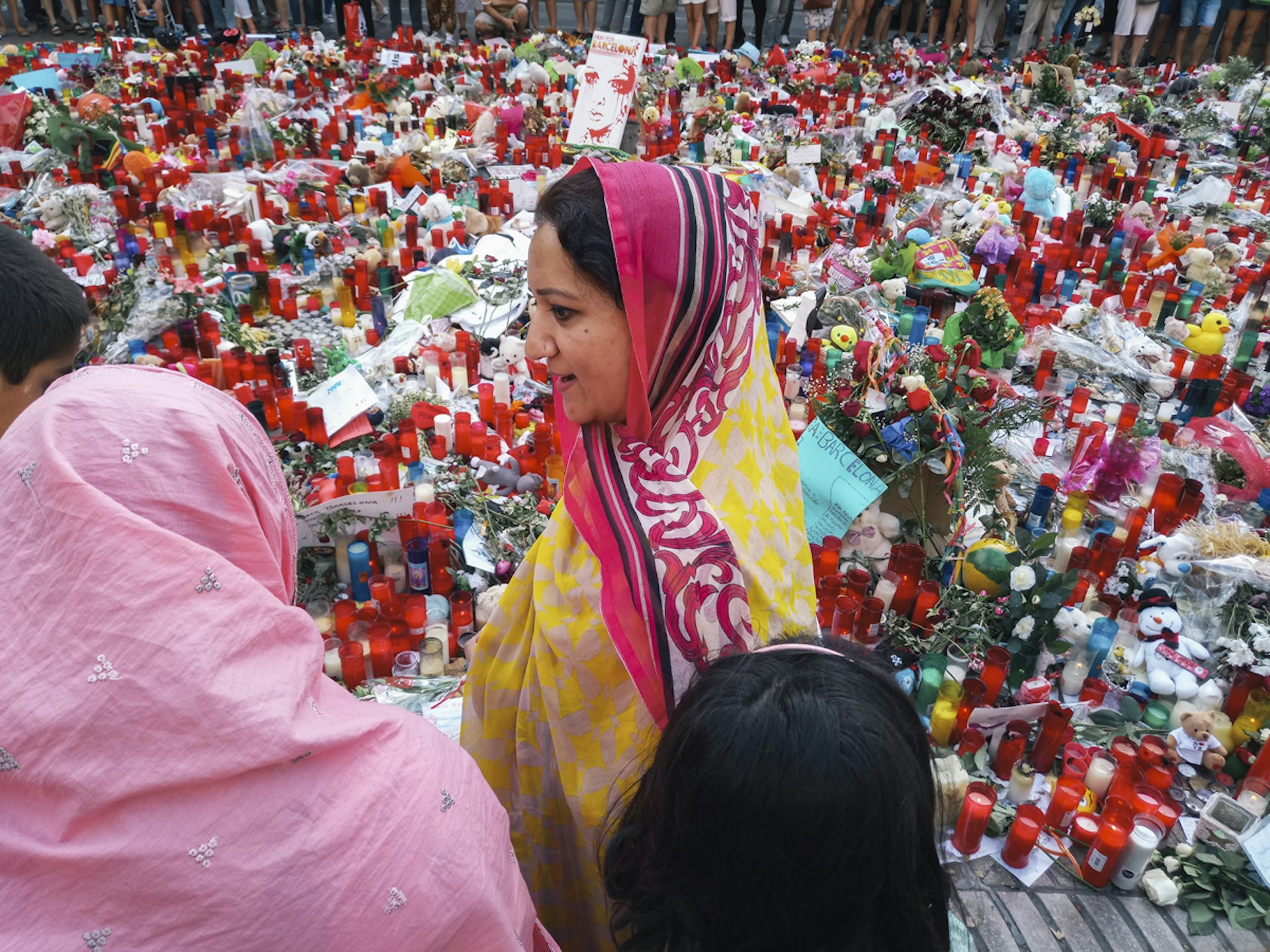

This was the first time I had taken photos of such a heavy event. As a travel photographer, I usually document adventure and try to use ‘feeling’ as a point of entry: making people feel what it was like to walk down a street, or experience a new culture.
So that’s how I approached this as well. I didn’t want to make anything appear heavier than it felt, which is something I think the news is guilty of doing.
Even though we are inundated with images every day, photography is more vital than ever. It’s through photos that you get the closest understanding of what it actually feels like to be standing there. If we only focus on negative things, then all we’re doing is breeding fear. It’s like a chain reaction.
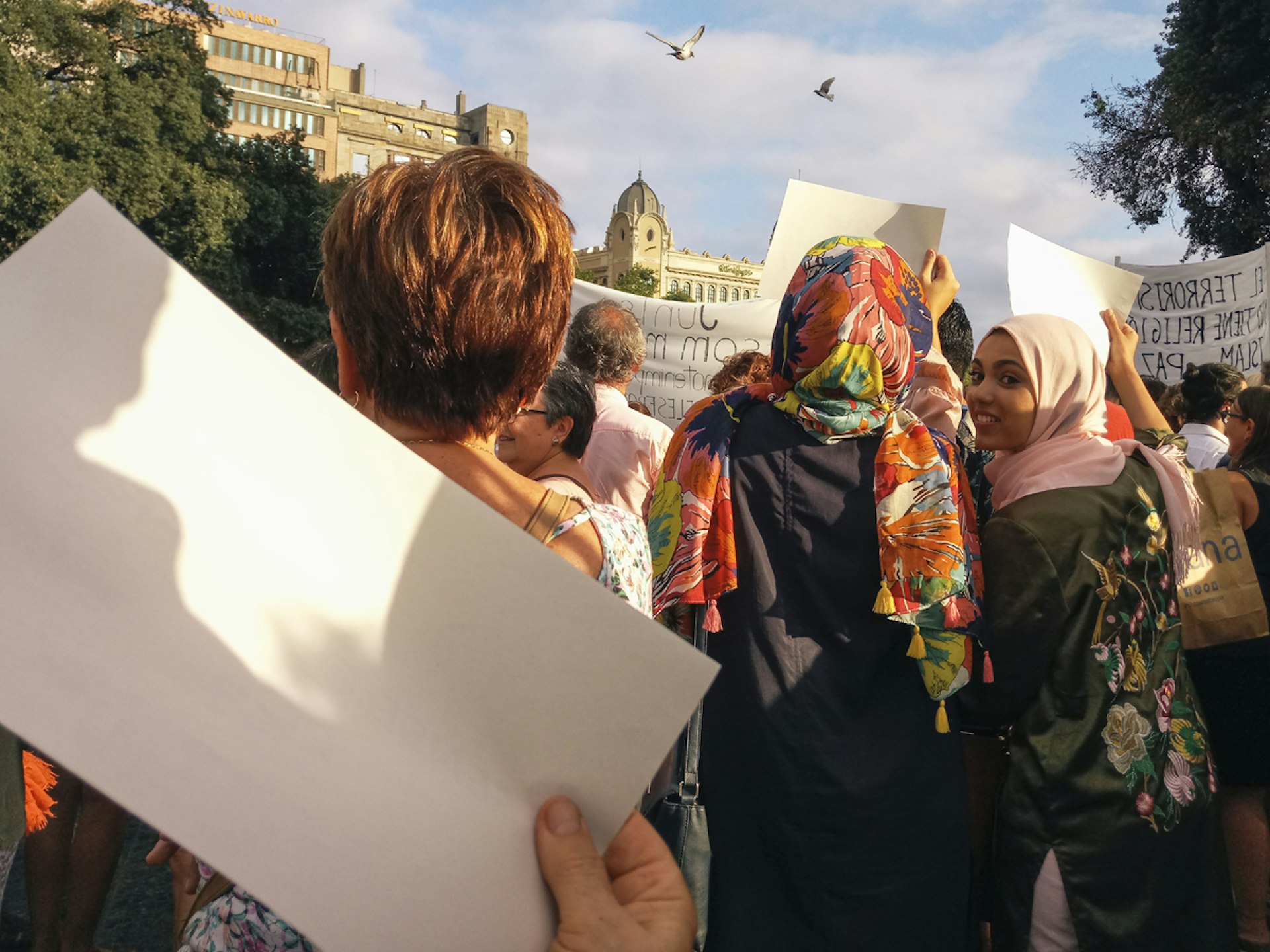
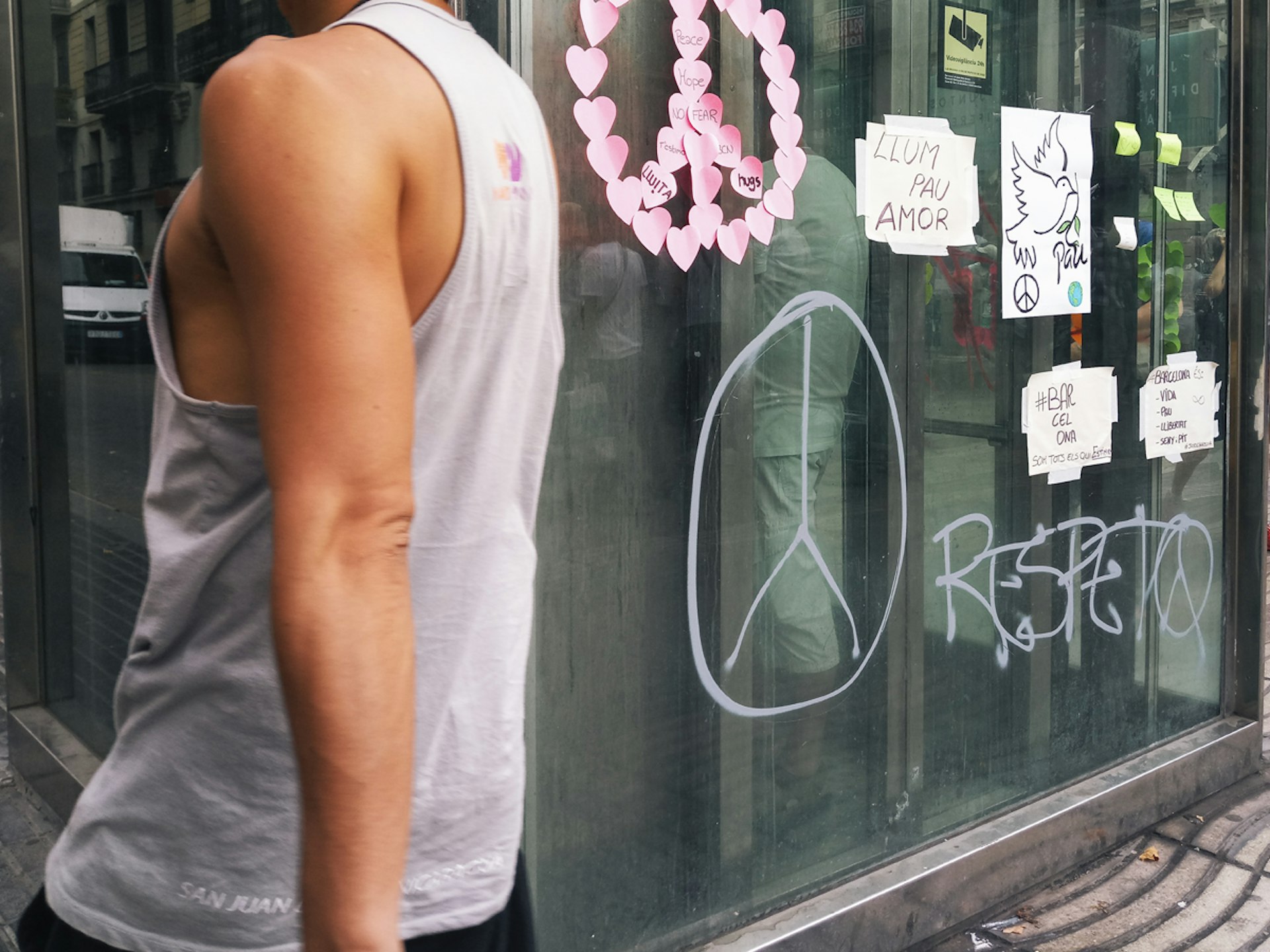
Witnessing the aftermath of an attack like this didn’t really change my perspective on anything. It makes you reassess things and value freedom. It makes you value friends and family, and enjoying life, because anything can happen at any time.
But being there as a photographer absolutely made me look at what happened differently. When you take photos you’re observant of everything happening around you.
You see every small movement, every person that’s crying, everyone that’s holding a sign. You see every person as an individual and zone in on how they’re acting.
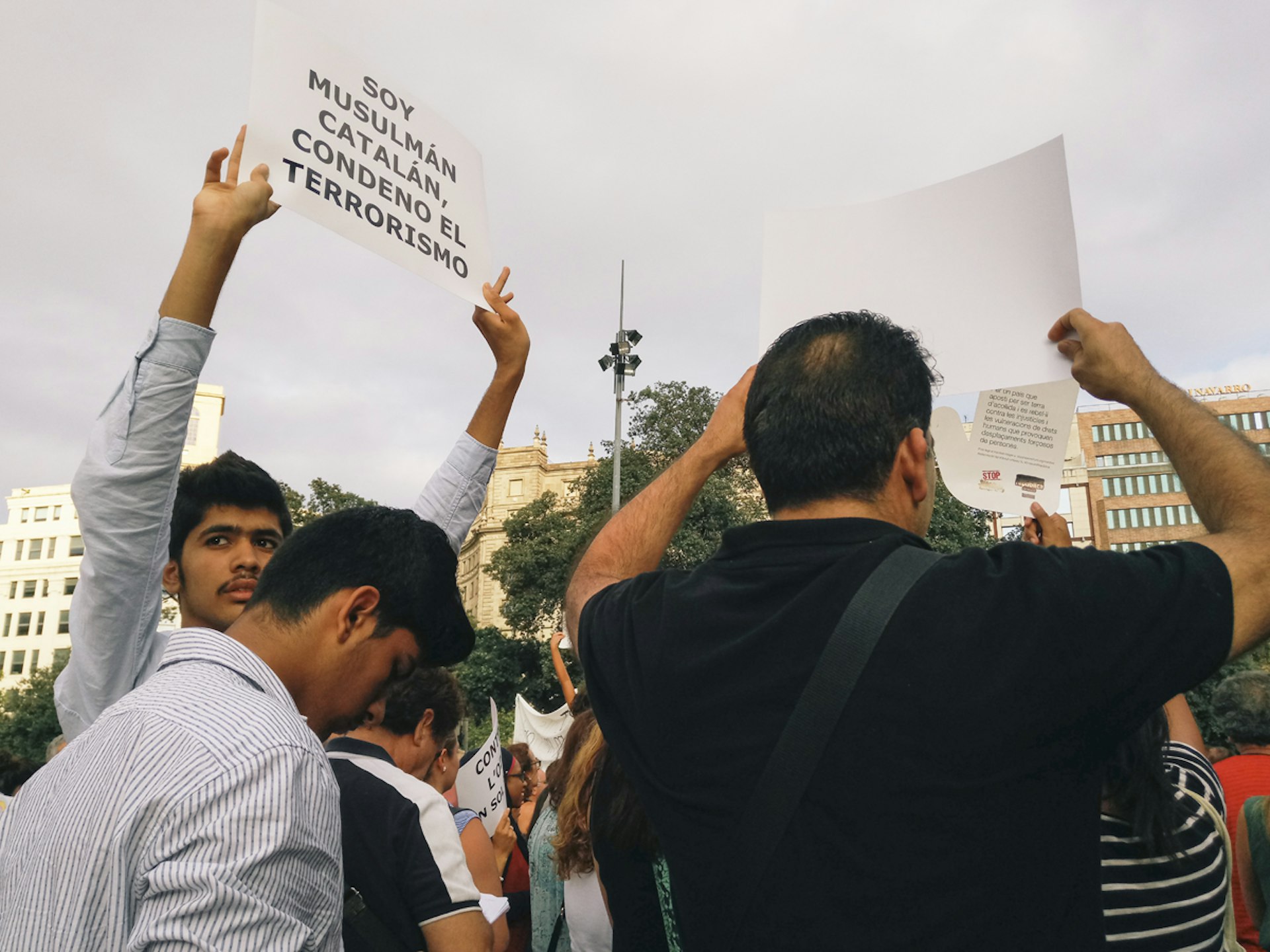
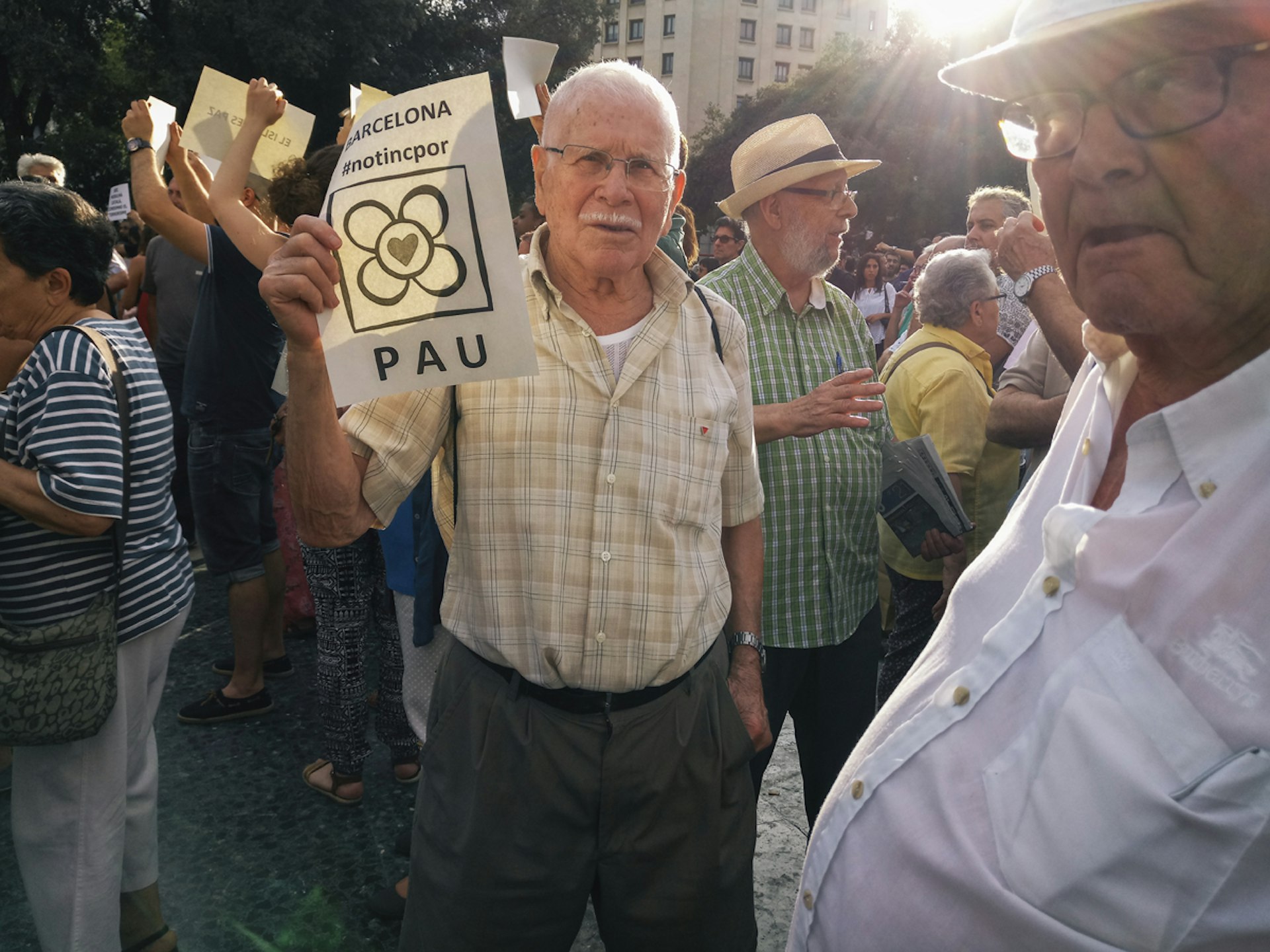
Barcelona started springing back to life days after the attack. The city went back to a state of celebration – but by then the news cycle had moved on.
I believe it’s important for people to see that the story didn’t end with mourning; that there was joy on the streets again. If anything, the city came back even stronger. People were eager to show they weren’t scared, as a tribute to those who lost their lives.
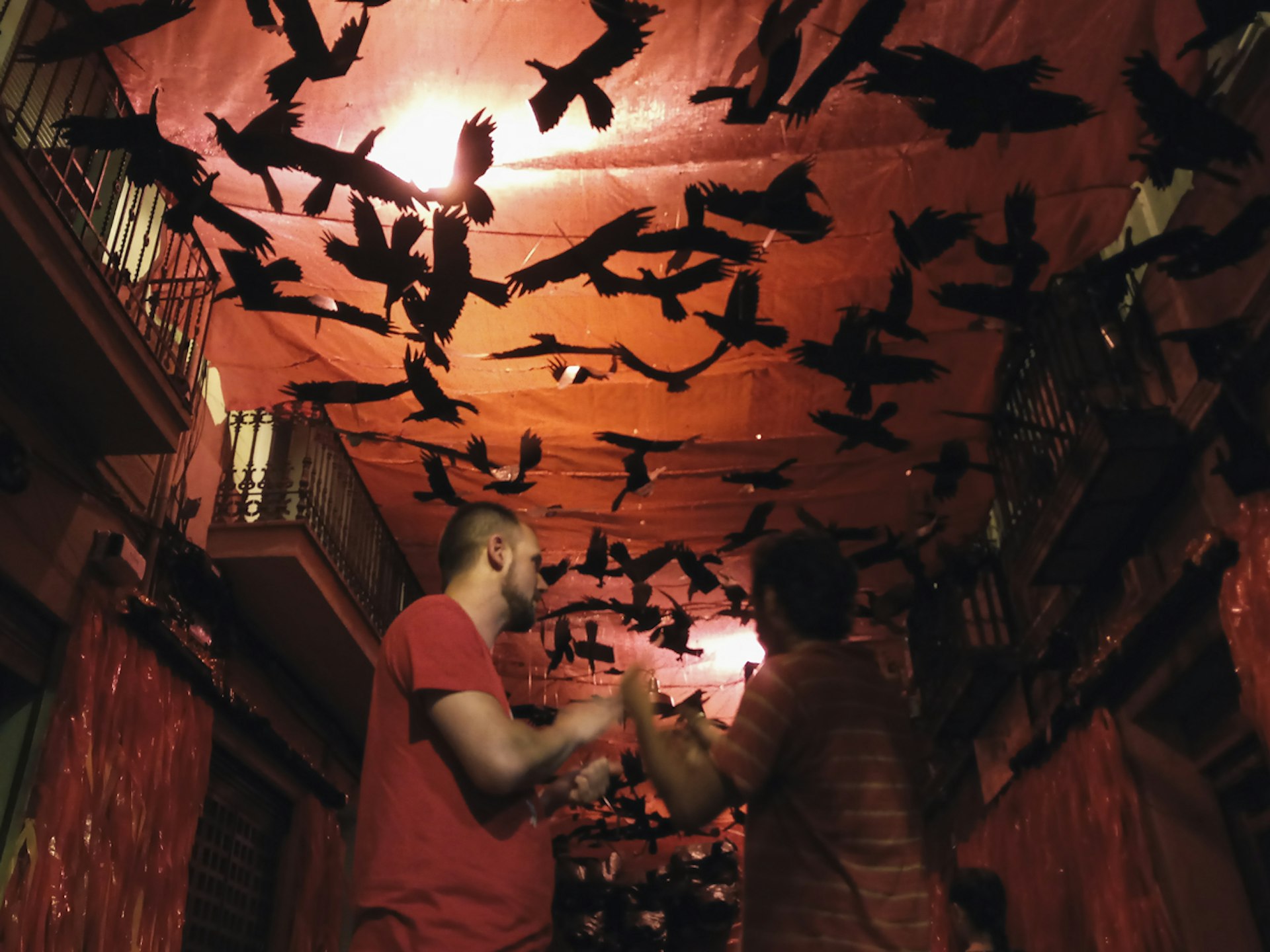

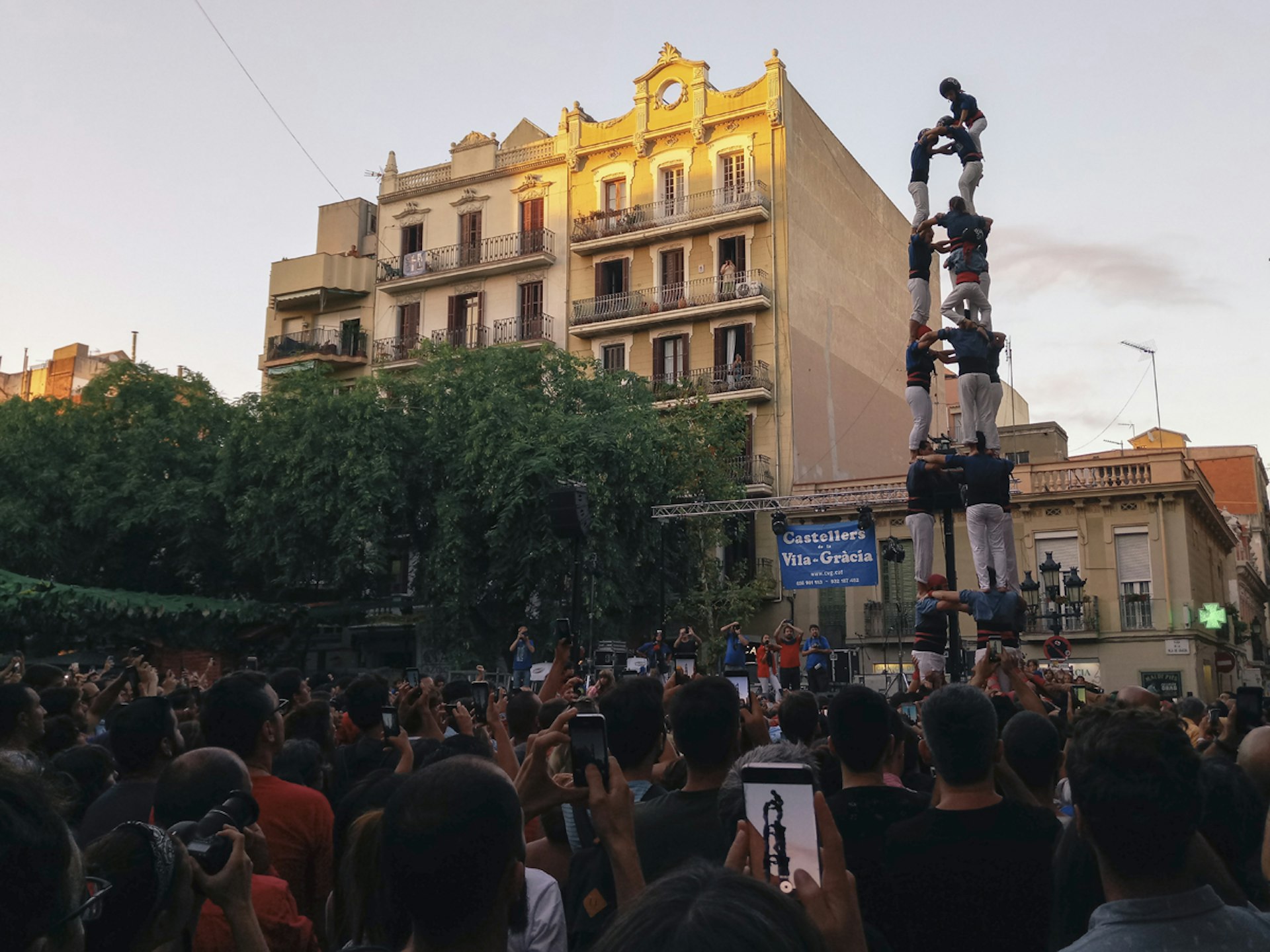
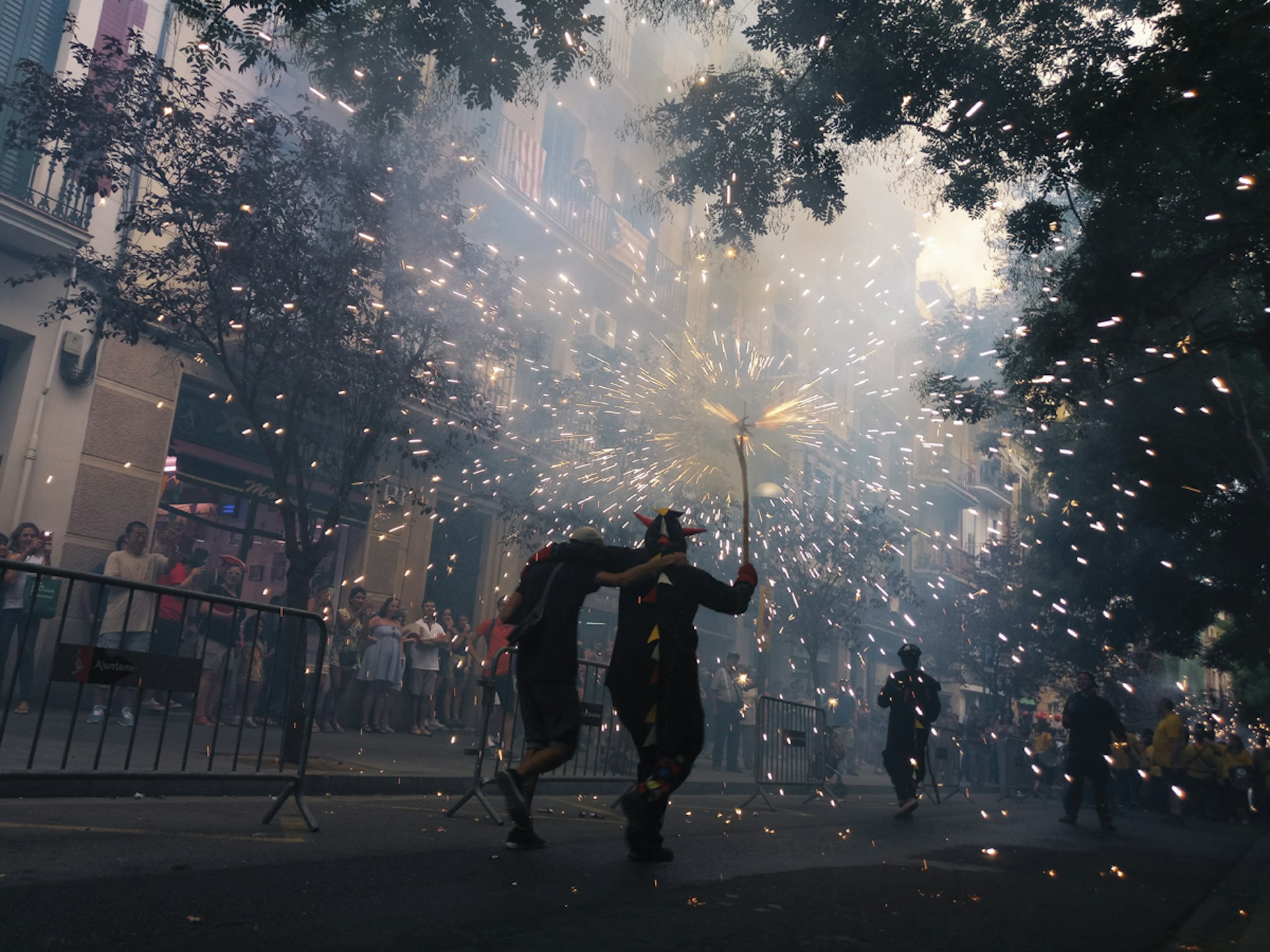
That’s the great thing about Barcelona – things always move on. The people of this city don’t let negative things affect them. All they want to do is enjoy their lives: that’s the beauty of living here.
Pivot Points: Stories of Change from Huck Photographers are shot entirely on the KODAK EKTRA Smartphone, a 21-megapixel camera with 4K video capability.
Enjoyed this article? Like Huck on Facebook or follow us on Twitter.
Latest on Huck
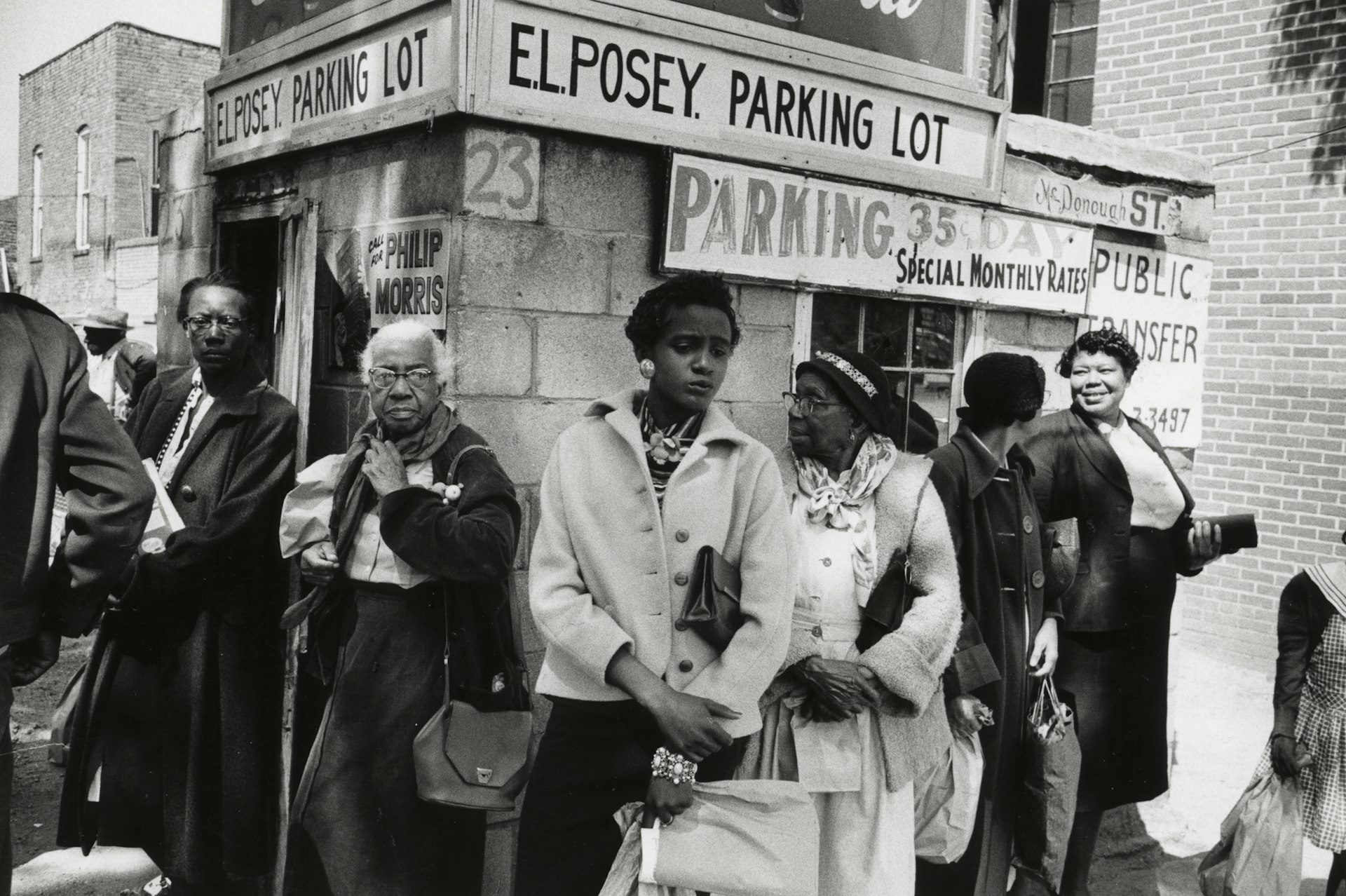
How Labour Activism changed the landscape of post-war USA
American Job — A new exhibition revisits over 70 years of working class solidarity and struggle, its radical legacy, and the central role of photography throughout.
Written by: Miss Rosen
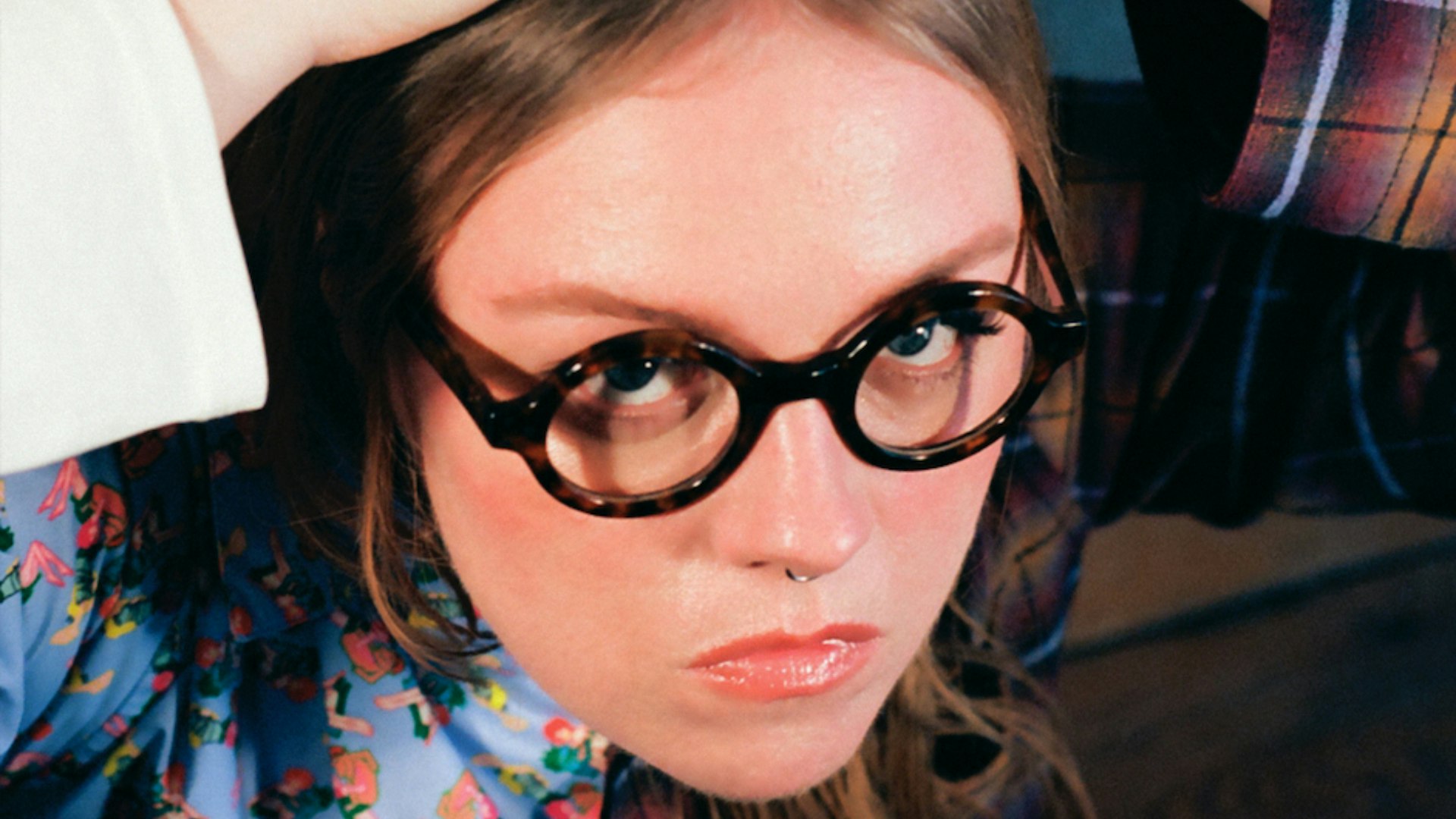
Analogue Appreciation: Emma-Jean Thackray
Weirdo — In an ever more digital, online world, we ask our favourite artists about their most cherished pieces of physical culture. Today, multi-instrumentalist and Brownswood affiliate Emma-Jean Thackray.
Written by: Emma-Jean Thackray

Meet the shop cats of Hong Kong’s Sheung Wan district
Feline good — Traditionally adopted to keep away rats from expensive produce, the feline guardians have become part of the central neighbourhood’s fabric. Erica’s online series captures the local celebrities.
Written by: Isaac Muk

How trans rights activism and sex workers’ solidarity emerged in the ’70s and ’80s
Shoulder to Shoulder — In this extract from writer Jake Hall’s new book, which deep dives into the history of queer activism and coalition, they explore how anti-TERF and anti-SWERF campaigning developed from the same cloth.
Written by: Jake Hall

A behind the scenes look at the atomic wedgie community
Stretched out — Benjamin Fredrickson’s new project and photobook ‘Wedgies’ queers a time-old bullying act by exploring its erotic, extreme potential.
Written by: Isaac Muk

“Welcome to the Useless Class”: Ewan Morrison in conversation with Irvine Welsh
For Emma — Ahead of the Scottish author’s new novel, he sat down with Irvine Welsh for an in-depth discussion of its dystopic themes, and the upcoming AI “tsunami”.
Written by: Irvine Welsh